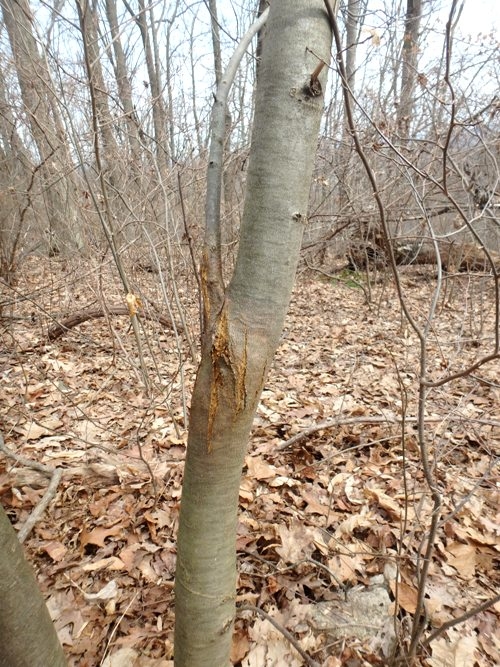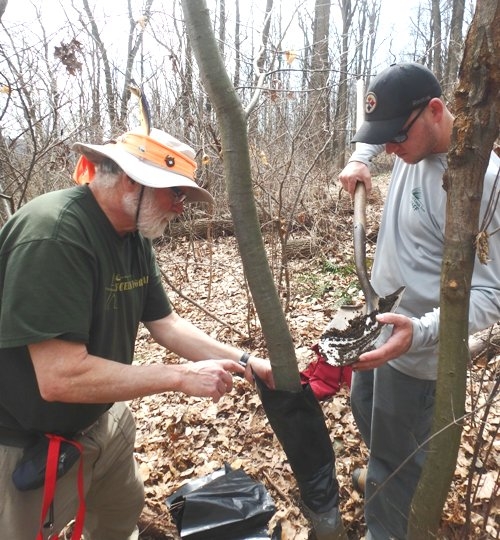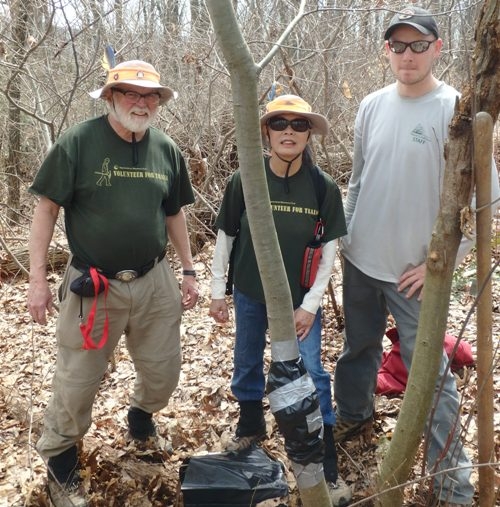Mariton: Band Aids for Chestnut Trees
by Tim Burris, Preserve Manager
American Chestnuts have issues. Since the early 1900’s a fungus that results in Chestnut Blight came to North America with Chinese Chestnut trees. It infected and nearly wiped out American Chestnuts on this continent. Some barely resisted the blight. Some died, but continue to send up new shoots from old root stock. Mariton is blessed with some of these so called stump sprouts that grow, get the blight, die, and then resprout. These wild trees offer hope if they can survive long enough for humans to discover a way to combat the blight and return full grown American Chestnuts to our forests.
For the past several years I have been working with volunteers Mike and Kieu Manes, who are volunteers with the American Chestnut Foundation. We have planted chestnut seeds (and blight resistant hybrids) at Mariton.

Blight affecting a young chestnut sapling.
Recently we have been trying an experimental technique to fight blight on young saplings. We call it the band aid technique. The theory uses the fact that the fungus that causes the blight cannot grow in soil. We wrap the area where blight is starting with black plastic and then fill the wrapping with soil. We seal up this band aid for 2 months and then remove it. This “smothers” the fungus and the tree can keep growing blight free a little longer.

Mike Manes (l.) and Tom Levendusky (r.) performing the treatment.
We first performed this technique in 2015 on a shoot that was badly damaged by blight when we found it. The band aid did stop the blight, but the damage to the tree was too extensive, and it died last summer. Last fall, I discovered that blight was just beginning on that sprout’s “twin” (they are both sprouting from the same stump, so genetically identical). This week we put a band aid on the new sprout. Stewardship Assistant, Tom Levendusky, helped out with the procedure.

Mike, Kieu and Tom with our latest experiment. The area by the shovel handle was treated in 2015.
We will know better in two months, but I am hoping we caught it early enough to extend this sapling’s life a few more years.
